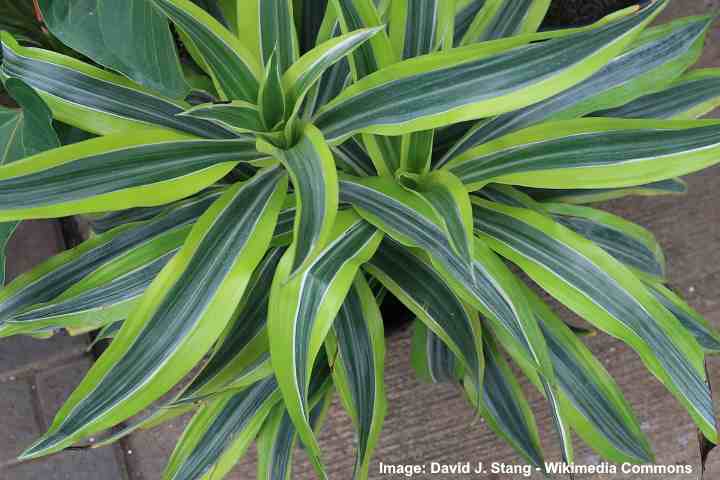17 Best Bedroom Plants for Clean Air & Low Light – NASA Study

Adding plants to your bedroom does more than just enhance its aesthetic appeal. Certain houseplants can help improve indoor air quality, increase humidity, and create a more inviting and tranquil atmosphere. But not all plants thrive in bedroom conditions. Some require more sunlight, while others need frequent care, making them impractical for a low-maintenance setting.
So, which plants are best suited for bedrooms? A NASA study on air-purifying plants provides insights, highlighting varieties that are both easy to care for and beneficial for indoor spaces.
How Bedroom Plants Improve Air Quality
Most people know that plants breathe—taking in carbon dioxide and releasing oxygen through photosynthesis. But did you know some plants can also remove toxins from the air?
According to a famous NASA Clean Air Study, certain houseplants act as natural air filters, helping to reduce indoor pollution from sources such as paint fumes, cleaning chemicals, and furniture materials.
Among the top air-purifying plants, NASA found that many can thrive in bedrooms, require minimal maintenance, and improve humidity—which is great for people who suffer from dry skin, allergies, or poor sleep.
The Best Air-Purifying Bedroom Plants According to NASA
If you want cleaner air, lower stress, and better sleep, here are some of the best low-maintenance bedroom plants:
Snake Plants (Sansevieria)

The snake plant (Sansevieria), also known as mother-in-law’s tongue, is one of the best plants for bedrooms due to its unique ability to release oxygen at night, unlike most plants that do so only during the day. It also helps remove airborne toxins such as benzene, formaldehyde, and xylene, making it an excellent natural air purifier.
NASA’s Clean Air Study identified the snake plant as one of the top air-purifying plants for homes. It is also incredibly low maintenance, thriving in low light and requiring minimal watering. This hardy plant doesn’t need pruning and can even flourish with neglect.
With proper care, the long, tapering green and yellow leaves can grow up to 35 inches (90 cm) tall, adding both function and beauty to your bedroom.
Peace Lily (Spathiphyllum)

Peace lilies are excellent bedroom plants, bringing both beauty and ease of care. Their glossy green leaves and elegant white flowers brighten up dimly lit spaces.
While peace lilies can tolerate lower light conditions, placing them near a window with indirect light will encourage more frequent blooming. They require only occasional watering and can adapt well to bedroom environments.
Golden Pothos (Hanging Plant to Keep in Your Bedroom)

Golden pothos, also known as devil’s ivy, is a fantastic choice for adding a lush, cascading effect to your bedroom. This trailing vine features heart-shaped leaves with golden-yellow and green variegation. It thrives in both bright and dim environments and requires minimal care—just water occasionally when the soil feels dry.
Perfect for hanging baskets, high shelves, or as a trailing plant on a dresser, golden pothos is a versatile and attractive addition to any bedroom.
Spider Plant (Chlorophytum comosum)

Spider plants are the “go-to” plants if you want a bedroom plant for hanging baskets that also keep the air clean. The spider plant’s cheery light green and white foliage looks like an explosion of spindly leaves. The arching ribbon-like leaves help to brighten up any space in a bedroom, bathroom, or north-facing room.
You don’t need to grow this easy-going bedroom plant in a hanging basket. The potted plant will look just as good on a dresser, bedside table, or bookshelf. Spider plants are so easy to care for that you can almost forget about them. These drought-tolerant plants can live for a long time without water and don’t mind being kept in a dark bedroom.
English Ivy (Hedera helix)

Perfect for a hanging basket in your bedroom, English ivy is a bushy type of vine plant with long stems and deeply-lobed leaves. You need to create a lot of vertical space in the bedroom corner because the vines grow very long. Alternatively, you can have a moss pole in the pot and train the vines to grow upward as a decorative accent.
Brightly-lit conditions encourage vigorous growth. However, even if your bedroom isn’t too bright, English ivy still grows well. To enliven a room, choose a variety of ivy with lush, variegated green and creamy white leaves or the ‘Gold Child’ cultivar with yellow-gold and green foliage.
Arrowhead Plant (Syngonium podophyllum)

In the picture: Syngonium podophyllum ‘Emerald Green’
Growing just as well in dimly-lit bedrooms as it does in bright rooms, arrowhead plants thrive in almost any room in the house. If your bedroom doesn’t get a lot of natural light, choose a deep-green arrowhead cultivar. These plants seem to fare better in lower light.
The broadleaf indoor plant has leaves in the shape of an arrowhead. Different cultivars have glossy green leaves, some have distinctive white veins, and others have variegated lime-green and cream-colored leaves. The best way for these plants to complement your bedroom décor is to hang them high up. The long trailing vines will dangle down from the hanging basket and can reach between 3 and 6 ft. (0.9 – 1.8 m).
Just remember that arrowhead plants are toxic and can cause skin irritation and burning if the sap comes into contact with the skin.
Dracaena (Dracaena deremensis) – Bedroom Tree

Dracaena deremensis ‘Warneckii’
Dracaena cultivars such as ‘Janet Craig’ or ‘Warneckii’ are low-maintenance and make excellent indoor bedroom trees. The plant has thin, ribbon-like foliage creating a spiky appearance on the top of thin woody stalks. Growing to a few feet in height, the plant can create a lush accent in any shady corner.
Dracaena plants are popular houseplants because they don’t need much water and they survive on little light.

Dracaena Deremensis ‘Janet Craig’
Happy Plant (Dracaena fragrans)

Dracaena fragrans ‘Limelight’
The happy plant, also known as the cornstalk plant, is another tropical leafy indoor tree that thrives in bedrooms. The difference between the happy plant and the Janet Craig is that the stalk and foliage on this species tend to be broader and bushier. The shiny glossy leaves will reflect what little light there is in the room.
Similar to other Dracaena species, happy plants thrive in bedrooms with low light and occasional watering.
Chinese Evergreen (Aglaonema)

Chinese evergreen is one of the most popular bedroom plants. The large green and white or silver leaves thrive in low light and only need water every so often. In Asia, Chinese evergreens are said to be among the plants that bring good luck. This decorative indoor aesthetic plant only needs a warm, humid environment and occasional light—artificial or natural light is fine.
As with most houseplants that have variegated foliage, light-colored leaves require more sunlight. So, some Chinese evergreens may fare better in bedrooms with south-facing windows where they get plenty of bright light. Cultivars with darker-green leaves will grow better in dim rooms.
Wax Flower Plant (Hoya carnosa)

Also called the porcelain-flower plant, this species of hoya is an excellent bedroom plant that doesn’t require a lot of attention. The fleshy, succulent leaves retain moisture, meaning that you don’t have to water this plant frequently. Although hoyas prefer bright, indirect light, they can survive well in dimmer conditions.
Because the wax flower plant grows on trailing vines, this plant is an excellent choice for a colorful bedroom hanging basket. Or, you could provide some support and train the hoya to grow upright. Under the right conditions, your hoya will produce beautiful porcelain-flowers to lighten up your bedroom.
Dumb Canes (Dieffenbachia)

Dieffenbachia cv. ‘Bausei’
These popular houseplants grow in most rooms of your home—anywhere from bedrooms with moderate light to brightly-lit places. However, even in low light, dumb canes are very forgiving. The most important thing is to keep the large oval leaves away from direct sunlight. These easy-to-grow houseplants have green leaves with creamy or yellowish blotches.
Because dumb canes grow upright, they are excellent for placing at an empty bedroom wall or in a shady corner. The bright leaves add texture and color to any room without the need for flowers.
Low-Light Orchid Flowers

This image shows Phalaenopsis orchid
If you want beautiful rare flowers in your bedroom, then have an orchid. Most houseplant orchids are easy to grow and don’t require a lot of attention.
Some varieties of orchids such as Phalaenopsis or Lady’s Slipper grow well in dark areas of your home, such as bedrooms. These orchids only need occasional watering and they thrive in average room temperatures. The native habit of many orchids is dark, humid conditions of tropical rainforests.
Maidenhair Fern (Adiantum)

Maidenhair ferns can’t grow in dark conditions such as in a bathroom with no windows. However, they will grow well in north-facing rooms and bedrooms with low to moderate light. If they get some morning or afternoon sun, they will thrive even better.
Many people keep maidenhair ferns in their bedrooms for their soft, gorgeous foliage. The thin arching stems have tiny delicate green leaves growing on them. However, these ferns can be challenging to look after and are not low maintenance plants.
Peperomia as a Bedroom Plant

Peperomia caperata
Peperomias are suitable bedroom plants because of their love of shade and moderate light. In low-light rooms, their foliage may lose some of its vibrancy. There are many species of peperomia, all with unique patterns on their leaves. Usually, you need to leave the soil to dry out before watering.
Also called radiator plants, these small houseplants are perfect for compact, shady places. Some peperomia varieties have thick glossy green leaves, others have green striped patterns, and some have heart-shaped purple leaves with pronounced veins.
Parlor Palm (Chamaedorea elegans)

As its scientific name suggests, the parlor palm is an elegant houseplant that grows like a small tree or palm. This palm is one of the most popular indoor palm plants in the world. In your house, the parlor palm can grow in many different conditions. The leafy palm tolerates low light and low humidity and needs to be kept away from direct sunlight.
Some daylight and artificial light in your bedroom is enough to keep a parlor palm growing well. Indoors, parlor palms grow to between 3 and 4 ft. (0.9 – 1.2 m) tall. Because this is a slow-growing plant, it will take years to reach its full height.
Fiddle Leaf Fig (Ficus lyrata)

This popular ornamental tree can grow in a pot in your bedroom or other spacious areas of your house. Although the indoor tree grows in shady areas, it needs some natural, indirect sunlight to thrive. The lush, glossy leaves are very large and bring some of the tropics to your bedroom.
When caring for your ficus plant indoors, it’s essential to get the water, humidity, and temperature just right. This type of fig tree may not grow well in low to dim lighting conditions.
If your bedroom doesn’t get much light and you want a small ficus, try the weeping fig tree (Ficus benjamina). It tolerates considerable shade and looks great in a dim corner or against a bedroom wall.

Ficus benjamina
Bedroom Plants and Feng Shui
In Feng Shui, bedroom plants are sometimes discouraged because they symbolize growth and active energy rather than relaxation and rest. However, many people find that certain plants, like peace lilies, bring a sense of tranquility and balance to their space.
If you prefer to follow Feng Shui principles but still want greenery in your bedroom, opt for small, low-maintenance plants and place them strategically. A peace lily or snake plant in a corner can enhance the atmosphere without overwhelming the room’s energy. In larger bedrooms, a palm or dracaena positioned away from the bed can add a calming touch without disrupting the restful environment.
Related articles:
